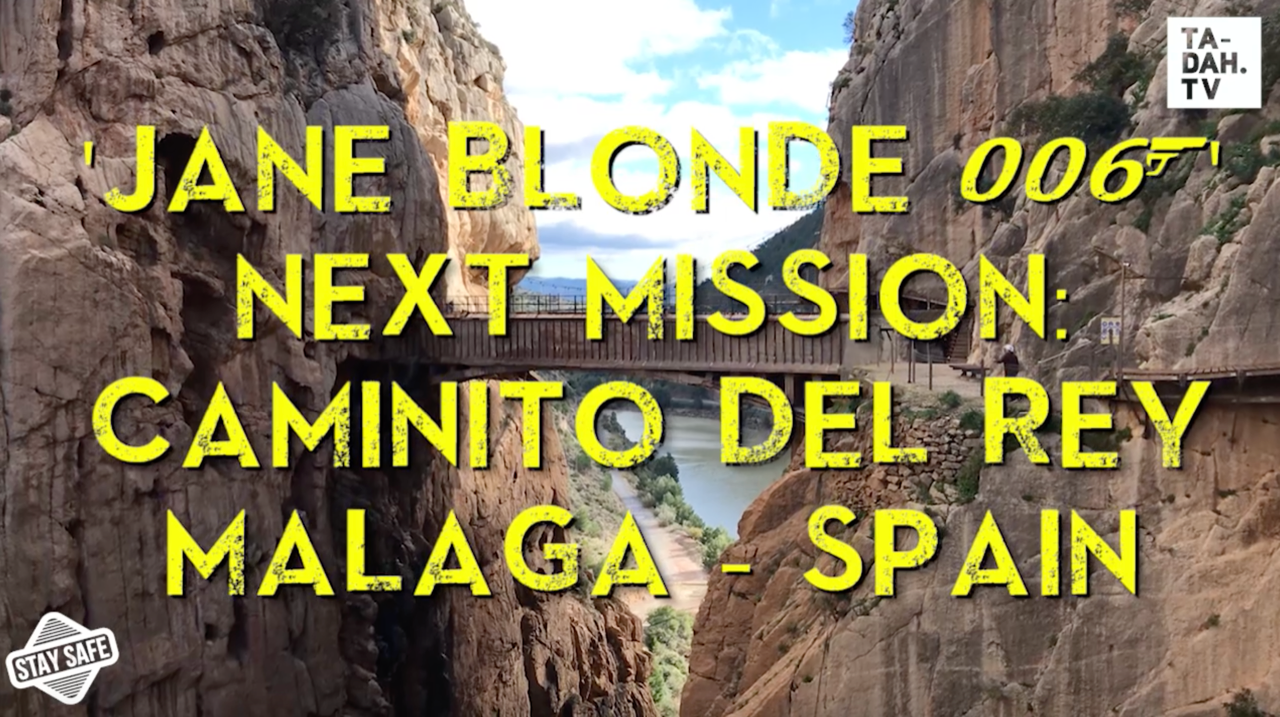Keukenhof Tulip Gardens will not open to the public on 20 March
Bilbao – Guggenheim Museum: June Crespo.Vascular until 6 September’24
Bilbao is a true lifestyle destination and has to be one of the most enjoyable places in Europe to spend a city break at! The town is packed with restaurants & bars, as food is a BIG thing here, whilst music festivals and live performances take place throughout the year and then…there’s the Guggenheim Museum. Impressive beyond belief, treat it like an art mekka, as the world flocks to this place for outstanding blockbuster shows. Everything about this city screams creativity & lifestyle, so there’s something to enjoy in every corner
Guggenheim Museum in Bilbao
Bilbao, a port city in the Northern Basque region of Spain, home to the spectacular Guggenheim Museum. Which is potentially Bilbao’s most famous visitor attraction, drawing in crowds in their hundreds of thousands each year! First established in 1997, part of a plan to transform the city of Bilbao, the museum is part of a partnership between the Basque Institutions and the Solomon R. Guggenheim Foundation. Soon to be celebrating its 24th birthday, as part of the international collection of Guggenheim Museums, the Guggenheim Bilbao is one of the largest museums in Spain. Here at TA-DAH.TV we’ve done our research into this amazing museum to offer you this exciting insight into all that the Guggenheim has to offer as a tourist attraction. Now you can be ready for a trip to the beautiful city of Bilbao, being sure to tick off the Guggenheim Museum while you are there!
The design and history of the Guggenheim Museum
The magnificent building was designed by Canadian American architect, Frank Gehry. The vast space covers 24,000 m2 with 9,000 of this dedicated to exhibition space, so there’s plenty to explore. Gehry’s design has created a sculpture-like structure which seamlessly integrates into Bilbao’s urban design and the surrounding area. To see inside the museum and the stunning structure of this building, check out the museum’s virtual tour! For the city and people of Bilbao it has generally had a positive economic impact, drawing in millions of visitors and millions in economic activity.
Taking pride of place, at the entrance to the museum, is a sculpture created and designed by the famous Jeff Koons. Aptly named ‘Puppy’ this sculpture is that of a giant West Highland Terrier! Completely covered in flowering plants. Thanks to the imposing size of this sculpture, Puppy really does take your breath away. Koons designed this sculpture for the entrance of the museum to entice the public and in his words; ‘Puppy, majestic and robust whilst guarding the doors of the museum, fills the audience with admiration and joy.’
Temporary exhibitions at the Guggenheim Museum Bilbao
Well-known for its large-scale art installations and exhibitions, the museum has held a vast array of exhibitions over the years since its opening. Temporary exhibitions have been popular with the public, including tourists, drawing in thousands.
Current Exhibitions:
- THE ROARING TWENTIES
May 7, 2021 – September 19, 2021 - CECILIA BENGOLEA. ANIMATIONS IN WATER
June 24, 2021 – October 24, 2021 - LEARNING THROUGH ART 2021
June 15, 2021 – September 19, 2021 - THE LINE OF WIT
June 11, 2021 – January 16, 2022
Previous Exhibitions:
- KANDINSKY
November 20, 2020–May 23, 2021 - JENNY HOLZER: THING INDESCRIBABLE
March 22–September 9, 2019 - DAVID HOCKNEY: A BIGGER PICTURE – This was one of the museum’s most successful exhibitions which drew in over 290,000 visitors!
May 15 – September 30 2021 - LUCIO FONTANA: ON THE THRESHOLD
May 17–September 29, 2019
Permanent exhibitions and collections
From the opening of the museum, the Guggenheim Museum Bilbao has been working to establish a permanent collection of art pieces. This consists of works from the mid-twentieth century up to the present day.
Pieces within the collection include famed works from notable names such as:
- UNTITLED
Mark Rothko
Following the common theme of Rothko’s other works, Untitled consists of large expanses of colour delineated by uneven, hazy shades. - TULIPS
Jeff Koons
As part of Koons’s Celebration series, Tulips embodies the generic, mass-produced objects that we often associate with celebrations like birthdays, holidays, and festive periods. Tulips looks very much like a bouquet of balloon flowers, of gigantic proportions. - INSTALLATION FOR BILBAO
Jenny Holzer
Holzer’s piece consists of a row of nine vertical, double-sided L.E.D. signboards. This piece was designed as a site-specific piece to work alongside the building’s design. - MAMAN
Louise Bourgeois
Maman is frankly quite terrifying, but also what a spectacle! At almost 9 meters tall, this sculpture takes on the form of a spider which is said to have been inspired by the concept of maternity and the combination of fragility and strength found amongst the silk spiders. This piece is quite the conversation starter.
2021 Six Nations Ch’ship until 20 March
Biathlon World Cup 20/21 until 21 March
9th Ultra Sierra Nevada 2023 from 14-16 April
Caprices Festival – Modernity 2021: April ONLINE and 17-19 & 24-26 September in Crans Montana
Caminito del Rey – hiking one of the world’s scariest pathways in Malaga
Holy Moses, this is not for the faint hearted – are you ready to join Jane Blonde, Agent 006, Licence to Thrill on what used to be the most dangerous walkway in the world? Good thing then, that it has been refurbished a few years back and is completely safe to hike, even in covid times, including disinfectant gel stations mounted onto the rocks. This historic pathway, pinned onto the cliffs of dolomite rock formations is as exciting as it is interesting. It was originally created as a through-route for workers at the hydro-station, then became a pathway connecting Malaga with the rest of Spain, which was important for trade.
Once the world’s most dangerous footpath, it was fully restored in 2015, and now offers a spectacular hiking experience, through ravines and gorges of the Guadalhorce river, including the hanging bridge, which literally connects two huge rock massifs. Breathtaking views, unbelievable landscape, exceptional flora and fauna with every exciting turn of the walkway. Seeing the vultures and eagles fly in the sky above reminded us of the raw nature this place really presents, whilst pre-historic rock formations of this size are quite overwhelming, making this an unforgettable adventure in more ways than one.
We went in December to avoid the summer heat and the crowds, which is highly recommendable. At 17ºC, it was a very comfortable to walk, snack and plenty of drink in our rucksacks, taking about 3hrs all in all, including walking the access road to the main entrance in the northern part of the Caminito. A picnic in the open air is what many families enjoy on the way, and we found a beauty spot for a quick pit stop, where the lay of the land was so dramatic, we felt we were sitting on the set of a Spaghetti Western or an old Winnetou film.
Entrance is 10€ pp, and you can also book a guided tour, if you want to learn everything there is to know about the place. Some people find them hanging on at some places for too long, but there is such a wealth of information about this place, it does take its time. Tours are also organised from Málaga, Marbella, Estepona and even Gibraltar, so you can make a day of it as well. If that’s not your thing, get in the car and just drive there, bearing in mind that during the summer season, you might find yourself longer on the road than necessary. On arrival, you may decide to park by the Northern Access area, which is closer to the main entrance of the Caminito, where you’ll also find a restaurant for a quick stop-over. However, if you want our advice, drive down to the Southern Access area in El Chorro and take the bus (1,30€ pp) up to the entrance situated in the North, as this affords you to walk straight to your parked car from the walk, rather than needing to wait for a bus to take you back up the mountain afterwards, when you might be tired.
The Caminito del Rey provides an awesome travel adventure, and considering it is so close to the beaches of the Costa del Sol, it is definitely worth a detour to go inland and explore the great countrysides that all of Andalusia has to offer. Watch our video first to get the low-down of the incredible sights that await…have fun!
The Caminito del Rey – World’s most dangerous hiking path?
The Caminito del Rey, which translates as The King’s Little path, is a walkway that is proving an increasingly popular draw since its new modern refurbishment. This narrow walkway is pinned into the rock, against the steep walls of a narrow gorge located in the Ardales near El Chorro in Málaga province. Originally called Camino del Rey, the walkway which is abbreviated locally to el Caminito has suffered over the years. Having fallen into disrepair, parts of the walkway were closed for over a decade in order for extensive refurbishment work to be carried out. Following four years of closure the walkway was reopened in 2015 and is anxious to shake off its past when it was known as the most dangerous walkway in the world. The refurbishment now means it is a safe place to walk, concerning what was one of the most important trade routes in the region. TA-DAH.TV has filmed there recently, taking the viewer on an incredible walkabout tour of the famous pathway.
An important trade-route
Work began on the construction of the walkway in 1901 and it was finished in 1905. It was built to offer a way for workers from the two local hydroelectric power plants, located at Gaitanejo Falls and Chorro Falls, to cross between the two locations. It was also used to provide a way in which materials could easily be transported and allow inspections and maintenance of the channel to be carried out. The trade route that this pathway offered was vital in saving time for those people working in and around the area.
When the nearby Conde del Guadalhorce dam was inaugurated in 1921, King Alfondo crossed the walkway and it got the name by which it is now known. The walkway measures around 1 metre in width and is over 100 metres above the river below. Its original construction was concrete resting on steel rails which were supported by stanchions pushed into the face of the rock at a 45-degree angle. It is the concrete construction that had eroded over the years making the walkway incredibly unsafe in places with complete sections of the concrete missing. The 2.9km of walkway was replaced by the local government at a cost of around €9 million, and whilst many of the original features remain in place the walkway now offers a wooden walking platform and fenced edges to offer visitors a significantly greater degree of safety.
There is also a museum near the walkway which offers a fantastic look at the history of the Malaga area.
The Costa del Sol
Located in the south of Spain, the Costa del Sol, or Sun Coast, is a region in the autonomous community of Andalusia. The area is made up of coastal communities and towns dotted along the coastline of the Province of Málaga. The region is a world-renowned destination for tourists with over 3 million visiting each year to take advantage of the glorious sunshine, sandy beaches, spectacular scenery, local cuisine and perhaps surprisingly some of the best golf courses anywhere in the world, amongst other popular sports like polo, yachting, tennis, padel, horseback riding & mountain climbing. As a holiday destination, it is easy to see why the region is such a popular tourist attraction. It’s easy to reach, via the airports of Malaga, Jerez, Seville and even Gibraltar, and really does have something for everyone, as TA-DAH.TV explains.
Not just beaches
The Costa del Sol isn’t just a huge tourist attraction for those holiday makers looking for a relaxing beach holiday or a vibrant nightlife with fantastic restaurants. However, the local terrain is a spectacular and often an overlooked attraction, that has seen a rise in popularity with hikers and other adventurous individuals, who are looking for something a little different and want to explore the scenery that this beautiful area has to offer. Avast array of geological variety awaits any nature lover, from mountain ranges, to beautiful natural lakes and reservoirs, as well as rolling valleys with ample wildlife to be found in their various natural parks. The Spanish Lynx is probably the most famous animal, close to extinction, only to be found in the Doñana National Park, which is just a short drive from the Costa del Sol.
Andalusian cuisine
They certainly know how to live well in this part of the world! You’ll find orange and avocado groves galore on the Costa del Sol, whilst further inland, olive groves cover a vast area of land between Malaga on the coast, via Granada,to Cordoba and finally Sevilla, on the ‘other side’ of Andalusia. The land is rich in minerals and even salt mines are being harvested near Cádiz. The countryside is ever changing, and like a huge garden, every vegetable and fruit grows here, with sunshine all year round.
Their fish is legendary, particularly on the Costa de la Luz, which leads up to Portugal, with Almadraba tuna being responsibly harvested along the small fishing villages dotting along the Atlantic Ocean. The Almadraba fishing season is a huge cultural event for the Spaniards down here, and whole festivals are designated to this time of the year, like the Tuna Festival in Zahara de los Atunes.
Learning to cook the Andalusian way is a proper craft, hence cooking classes and cultural experiences like ‘Annie B’s Ultimate Gourmet Tour of Cadiz’, is a joyous and fun culinary experience, and a real feast for foodies, learning all about the African inspired local cuisine of the area, but also it’s famous sherry, and the even more famous flamenco! One thing is for sure – it provides an experience you shall never forget!











